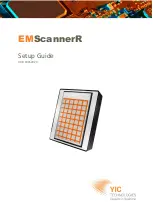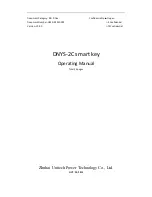
10
be checked in a free state with feeler stock or verifi ed on a previously installed blower with the aid of a dial
indicator. Less than .002” (.05 mm) spring or gap should be found.
Use only clean new pipe and make certain it is free of scale, cuttings, weld beads, dirt, or any other foreign
material. To guard against damage to the blower, insure that an inlet fi lter is used. Make provisions to clean
the fi lter of collected debris after a few hours of operation and periodically thereafter. (See the
Piping
Connections
section for additional details.)
Figure 3 shows a typical complete installation
of blower and accessories. Note the absence
of throttle or shut-off valves in either discharge
or intake piping. If it is possible for air fl ow
to be cut off in either of these lines, make
provisions to add a pressure and/or vacuum
relief valve. In some installations, it may be
desirable to use only an inlet silencer-cleaner
supported directly from the blower connection.
Weight of accessories and piping must be
kept to a minimum to prevent blower casing
distortion. Weights in excess of 10% of blower
weight should be supported independently of
blower and connected with a fl exible hose
or connectors. (The approximate weight of
your unit is included within the
Specifi cations
table.)
A blower may be driven by direct-coupling to
the driver or by V-belt drive, to obtain other
speeds within approved range. (See the
Motor Drives
section for more information.)
Blowers from Tuthill Vacuum & Blower Systems are internally and externally treated after factory assembly
and testing to protect against rusting in normal atmospheric conditions prior to installation. The maximum
period of internal protection is considered to be up to 6 months under average conditions, provided closing
plugs and seals are not removed. Protection against chemical or salt water atmosphere is not provided.
Avoid opening the blower until ready to begin installation, as protection will be quickly lost due to evaporation.
(For recommended preparations for long term storage (longer than 6 months), please see the
Long Term
Storage
section in this manual.)
5.1.1 LOCATION
Install your blower in a room or outdoor area that supplies adequate space and lighting for routine
maintenance. Indoor installation areas should be well ventilated and kept as cool as possible, because
operating the unit at elevated temperatures can result in nuisance overload or temperature shutdowns. An
unprotected outdoor installation is only satisfactory when correct lubrication for expected temperatures is
provided, as per the
Recommended Lubricants
section in this manual.
5.1.2 FOUNDATION
Your blower does not need a special foundation, however it does require a solid, level fl oor and adequate
frame support. Bolt the blower system to the fl oor and seal any cracks.
5.1.3 BLOWER AIR INTAKE
To minimize maintenance, supply your blower with the cleanest air possible. It is important that the air does
not contain any fl ammable or toxic gases, as the blower will concentrate these gases. This could result in
damage to the unit and surrounding property, lead to personal injury or death. Do not block or restrict the
opening or the blower and/or motor may overheat and fail.
Figure 3 - Typical Blower Installation
AIR FILTER
PRESSURE
RELIEF VALVE
CHECK VALVE
FLEX CONN.
PRESSURE GAUGE
DISCHARGE
SILENCER
INTAKE SILENCER
FLOW
FLOW
Содержание CTS 330
Страница 2: ......
Страница 23: ...Page 1 15 CTS 330 Owner s Manual CTS 330Hot Carbonating Truckmount System Figure 1 4 Hard Water Map...
Страница 93: ...Page 9 5 CTS Owner s Manual CTS 330Hot Carbonating Truckmount System...
Страница 137: ...40 NOTES...
Страница 142: ......
Страница 143: ......
Страница 144: ......
Страница 145: ......
Страница 146: ......
Страница 147: ......
Страница 148: ......
Страница 149: ......
Страница 150: ......
Страница 151: ......
















































